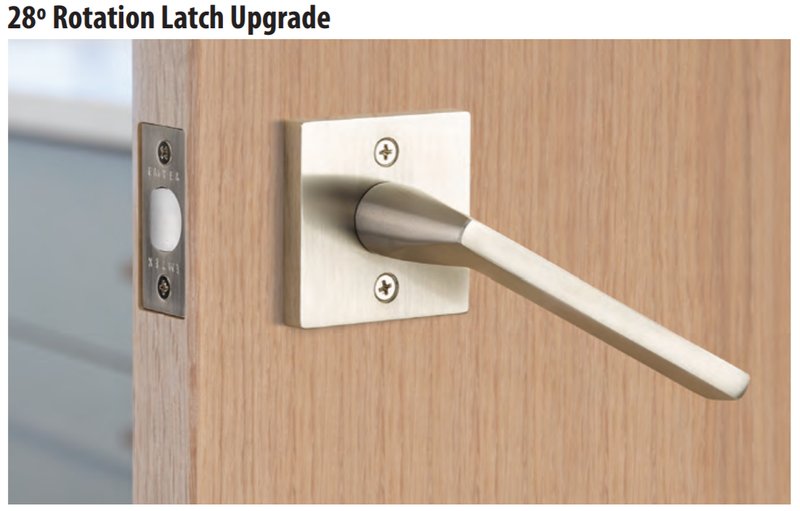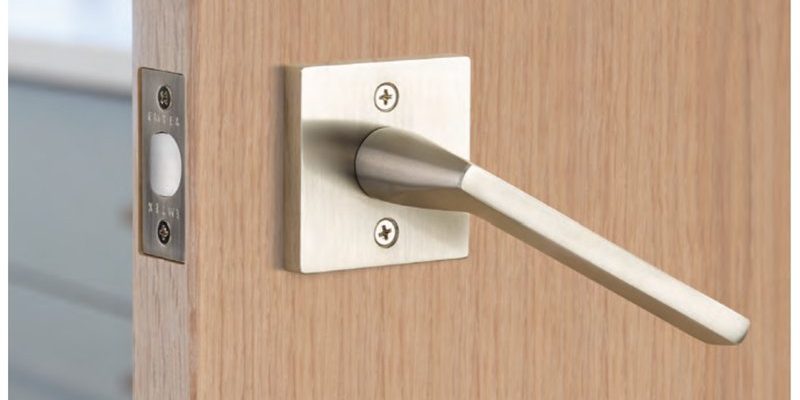
In this article, we’ll explore two popular types of latches: passage latches and privacy latches. You might be wondering how they differ and which one you need for your particular situation. Let’s break it down together. Imagine we’re sitting at a café, and I’m guiding you through the ins and outs of these latches, ensuring you have all the details to make an informed decision.
What is a Passage Latch?
A passage latch is a type of door latch that allows free access through a door without any locking mechanism. This means you can simply push the door open and walk through. They are typically used for interior doors, such as hallways or closets, where you don’t need to secure the space.
Use a passage latch in areas that require ease of access. For example, think about when you’re hosting a gathering at home. You want your guests to move freely between rooms, and a passage latch ensures they can do that without needing to fumble for a key or deal with a lock. It’s all about convenience!
You might be wondering about the mechanics behind it. The latch operates using a spring mechanism that automatically retracts when the door is opened. Once the door is closed, the latch will click back into place, keeping the door snug against the frame. It’s like a friendly door that welcomes you in and out with no fuss.
What is a Privacy Latch?
In contrast, a privacy latch offers a little more security. Think of it as your personal fortress for bathrooms or bedrooms. These latches have a locking mechanism, allowing you to lock the door from the inside, giving you that sense of privacy when you need it most. This is essential, especially in shared living spaces, where it’s important to have some personal space.
Most privacy latches come with a simple push-button lock or a thumb turn on the inside. It’s straightforward to use, making it easy to lock and unlock the door as needed. For instance, when you want some time to yourself in the bathroom after a long day, a privacy latch ensures you won’t be interrupted.
Another point to consider is the ease of use. Privacy latches usually unlock from the outside with a simple tool, like a flathead screwdriver, in case of emergencies. This is a thoughtful feature, as it balances security with safety.
Comparing Passage and Privacy Latches
Now that we’ve defined each latch, let’s compare them directly. Imagine you’re at a crossroad deciding which path to take: ease of access or secured privacy. Here’s a breakdown of how they differ:
- Functionality: Passage latches allow free movement without a lock, while privacy latches provide locking capabilities for personal space.
- Common Usage: Use passage latches for interior doors leading to non-private areas (like living rooms), and privacy latches for bathrooms and bedrooms.
- Safety Features: Privacy latches offer a locking mechanism, while passage latches do not, making them less secure.
When considering what you need, think about the locations where you intend to install these latches. Are you looking for complete freedom of movement, or do you need to ensure that certain spaces remain private?
Installation Differences
Installing either type of latch can be a straightforward process, but there are some differences to note. If you’ve got some DIY spirit in you, understanding the installation steps will help.
For Passage Latches:
1. Gather your tools: You’ll typically need a screwdriver, a drill, and possibly a chisel for the latch plate.
2. Mark your door: Determine where you want the latch to go. Usually, it’s about 36 inches from the floor.
3. Drill holes: Use your drill to create a hole for the latch and a smaller hole for the knob.
4. Attach the latch: Follow the manufacturer’s instructions to secure the latch into place.
For Privacy Latches:
1. Gather your tools: Just like with passage latches, you’ll need a screwdriver and a drill.
2. Mark your door: The height is the same as with passage latches—about 36 inches.
3. Drill holes for both the latch and the lock: This is a crucial step since you need separate holes for the locking mechanism.
4. Install the latch and lock: Again, refer to the manufacturer’s guidelines for proper installation.
Both types of latches can typically be installed in under an hour, making them a fun weekend project!
Common Issues and Troubleshooting
Like anything, latches can encounter problems. Let’s look at some common issues you might face with either type, along with helpful troubleshooting tips.
For Passage Latches:
– Problem: The latch doesn’t retract when the doorknob is turned.
– Solution: Check to see if the latch is stuck. Sometimes, a little lubricant can work wonders. If that doesn’t help, you may need to disassemble and inspect for any broken parts.
For Privacy Latches:
– Problem: The door won’t lock.
– Solution: First, ensure that the latch bolt is aligned with the strike plate. If it’s misaligned, you may need to adjust either the latch or the plate. If the mechanism feels jammed, applying lubricant can help as well.
It’s all about being patient and methodical in your approach to fixing any issues. Remember, every hardware problem has a solution!
Making the Right Choice for Your Space
When deciding between passage and privacy latches, consider how you use each room in your home. Are you prioritizing openness, or is privacy more critical? For example, if you have kids running around, you might prefer passage latches for hallways where ease of movement is key. On the other hand, a bathroom or bedroom would benefit from a privacy latch to ensure personal space.
You can also think about the aesthetic impact. Both types come in a variety of styles and finishes, allowing you to match them with your home’s design. A sleek, modern privacy latch can add a touch of elegance to a guest bath, while a simple passage latch may suit a more casual hallway.
Ultimately, the choice between passage and privacy latches hinges on your individual needs and the dynamics of your living space.
Understanding the difference between passage and privacy latches can help you make an informed decision that suits your home perfectly. Remember, passage latches are all about accessibility, while privacy latches prioritize security and personal space.
Take a moment to consider where you’ll install them and what functions matter most for those spaces. Whether you’re tackling a DIY project or simply upgrading your home, understanding these latches is key to creating a comfortable and functional living environment. So, next time you’re at the hardware store or browsing online, you’ll have the knowledge to choose the right latch without hesitation. Happy decorating!
